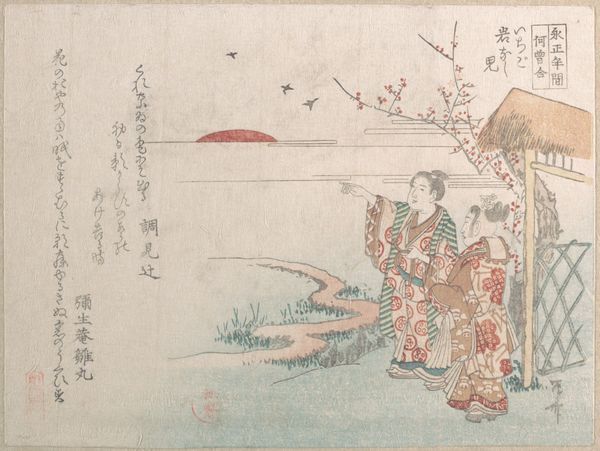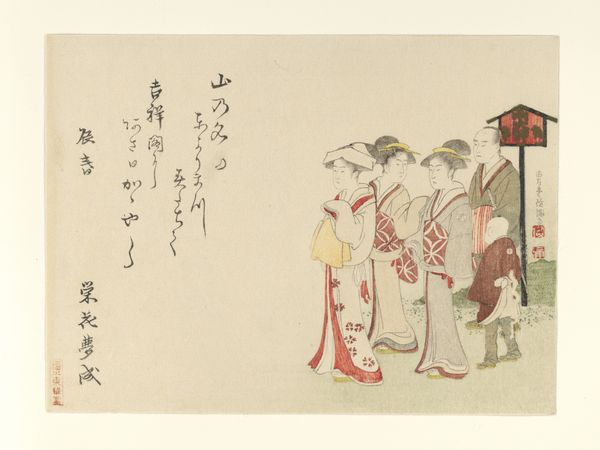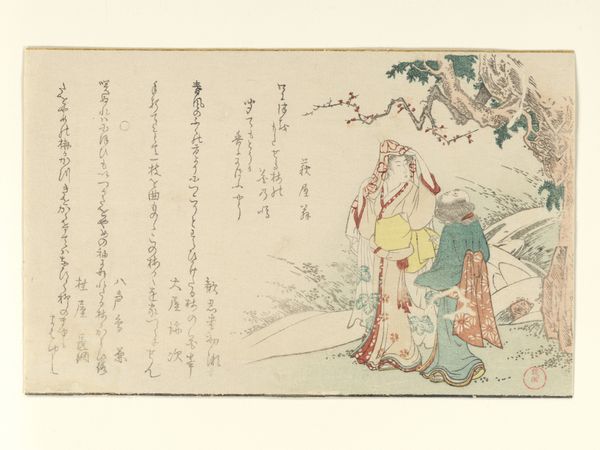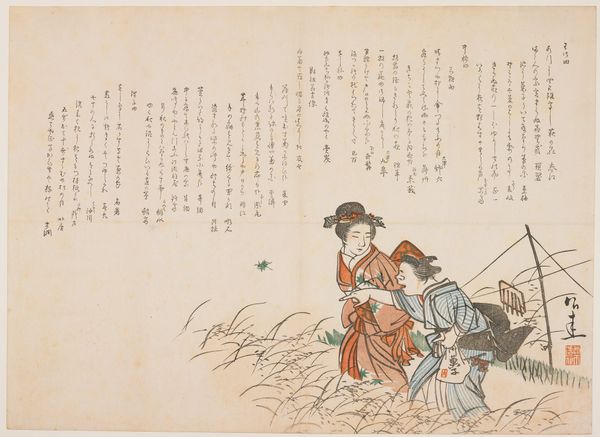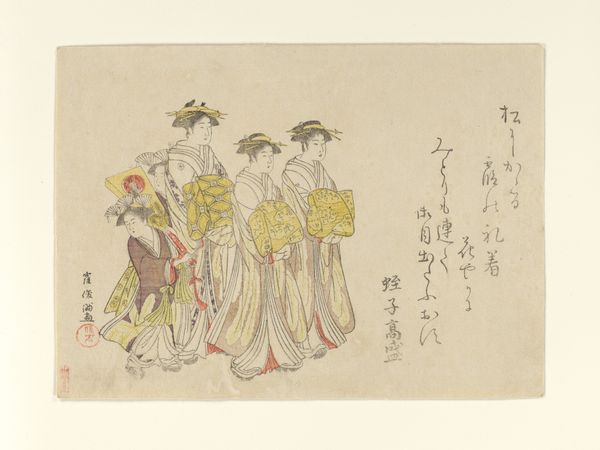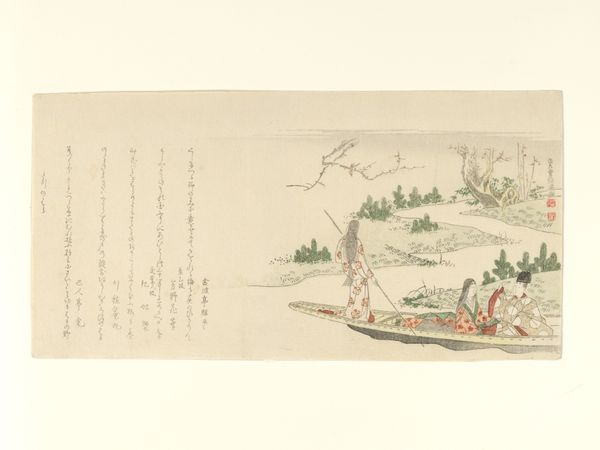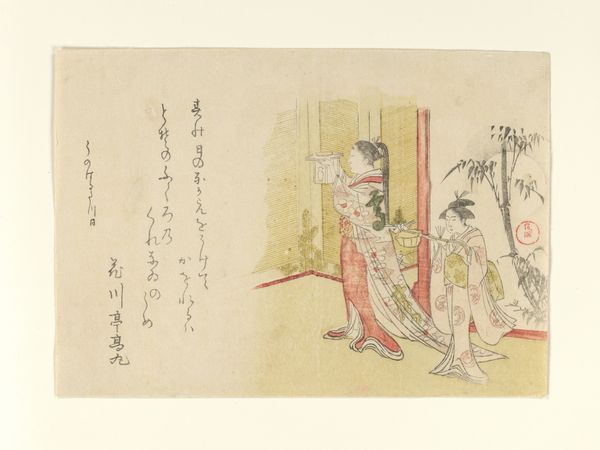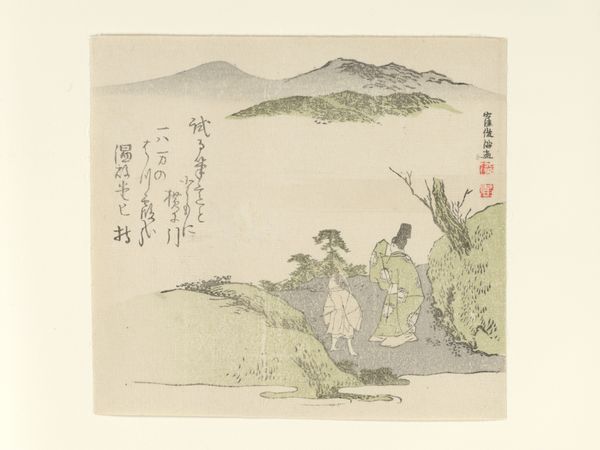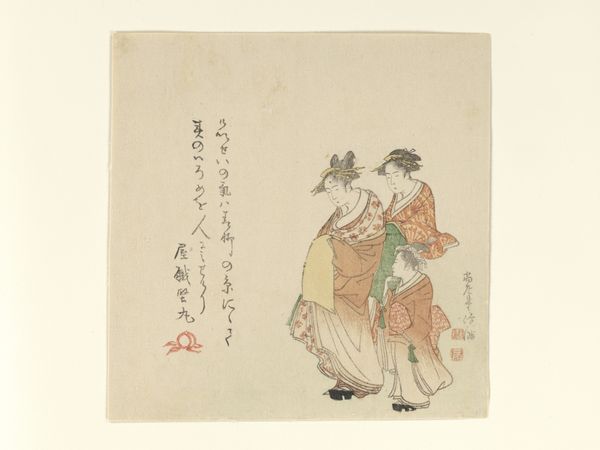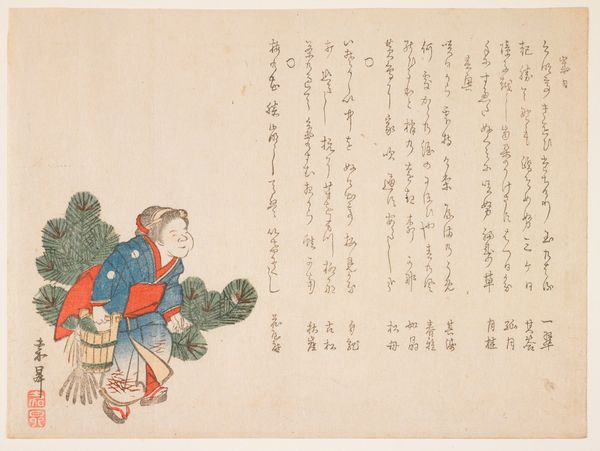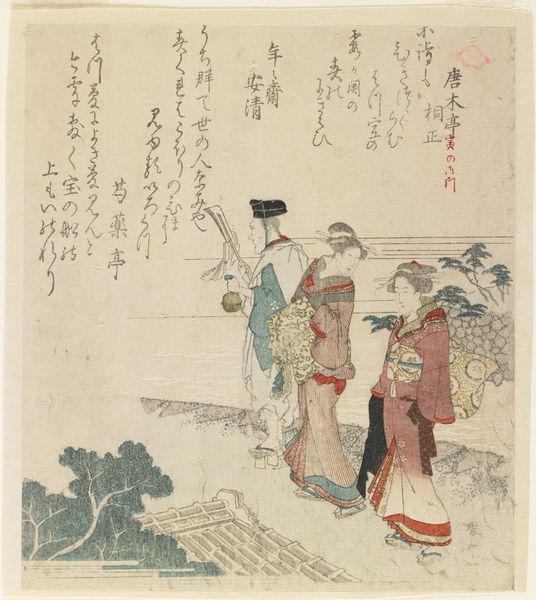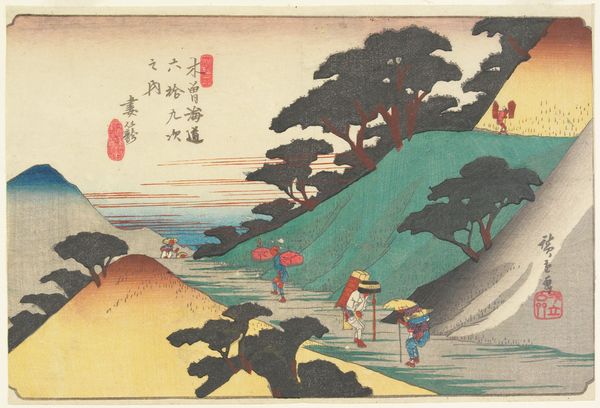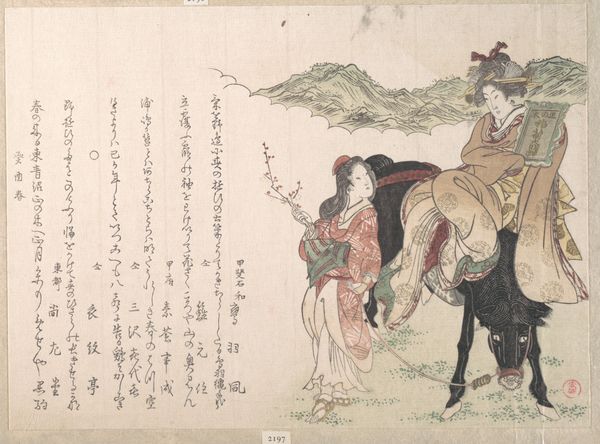
# print
#
asian-art
#
landscape
#
ukiyo-e
#
genre-painting
Dimensions: Image: 5 1/4 x 7 1/4 in. (13.3 x 18.4 cm)
Copyright: Public Domain
Curator: Here we have "Two Young Women on a Veranda," a print made around 1796 by Kubo Shunman, currently held at the Metropolitan Museum. My immediate sense is one of quiet observation. The muted palette and careful composition create a very contemplative mood. Editor: The quiet is deceptive. Look at the elaborate kimonos, the setting—a specific space constructed, literally and figuratively, to present these women. The print is Ukiyo-e, a whole industry that mass produced images for an emerging urban class. These images reflect desires, and the social position of women. Curator: I appreciate that context, but my eye keeps returning to the interplay of horizontals and verticals: the veranda contrasting the sweeping landscape, the women’s vertical forms against the horizontal lines of the railing and distant shore. There's a sense of balance and harmony achieved through formal devices. Editor: Harmony achieved through labor, I would argue. The making of prints was not an individual, solitary act. We should also consider the woodblock carvers and printers involved, whose labor and skill helped determine its circulation and popularity among specific strata in society. Curator: You're drawing our attention to the print's status as a commodity, produced for consumption. Yet, doesn’t that ignore the delicate application of color, the almost imperceptible gradations, all working to depict not just women, but a moment suspended in time? This is more than mere product; it’s evocative, inviting us to reflect. Editor: To whose experience, exactly? And which women? Are we romanticizing exploitation through our "aesthetic appreciation"? Perhaps our task is to analyze whose interests were being served and what kinds of narratives were being constructed within specific social structures, such as the Floating World. Curator: It is compelling to reflect on the various makers, but personally I am inclined to appreciate the elegant arrangement of forms, how they combine to create this specific mood. I admire Shunman's technique. Editor: Right, and by acknowledging the printmaking techniques and socioeconomic forces that created and propelled the Ukiyo-e tradition we perhaps come to a fuller understanding of its meaning today.
Comments
No comments
Be the first to comment and join the conversation on the ultimate creative platform.
